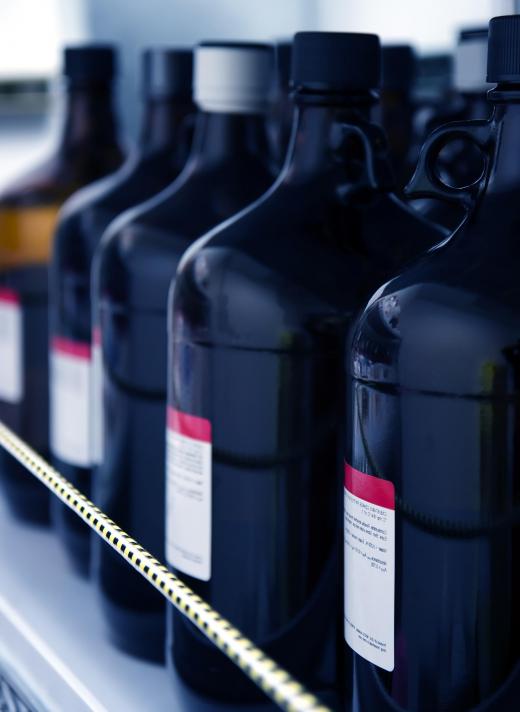Dimethylformamide (DMF) is an organic compound that is used as a solvent for many products, including lacquers, pigments and dyes. Known as a volatile organic compound (VOC), DMF can endanger both humans and wildlife, but the threat is regarded as minimal because it does not occur in nature and isn't encountered by humans outside of occupational settings. Dimethylformamide is not stable when strong acids or bases are around it, and it hydrolyzes back into its original state of dimethylamine and formic acid. According to the Material Safety Data Sheet (MSDS), dimethylformamide is hazardous to health, flammable, reacts to skin on contact and poses a minimal threat of reacting with other chemicals.
There are several ways to form dimethylformamide, all of which involve the use of dimethylamine. For smaller production runs, dimethylamine is catalyzed with carbon monoxide and methanol or with methyl formate. In larger, laboratory-scale productions, formic acid and dimethylamine react together to create this solvent.

As a solvent, or a chemical that mixes with other liquids, dimethylformamide is used in the formation of many products that require a strong chemical reaction. Its high boiling point leaves it with low evaporation potential, so it will not quickly dissipate when used with other chemicals at high temperatures. Many plastics and curing processes, such as the curing done to leather, need this chemical to complete the product or process. It also can be used to break down many organic compounds.

Dimethylformamide is a neutral compound, so it does not react very well when paired with a strong acid or base. A strong base would be a compound such as sodium hydroxide, and a strong acid would be something such as sulfuric acid. When a base or acid is paired with this compound, it will revert to its two original components. This reverting process is increased if placed in a high-temperature vat.
Dimethylformamide is a VOC, meaning it is dangerous for humans and wildlife. It is not made in nature and isn't encountered outside certain work settings, so it is not regarded as an especially hazardous compound. Testing has shown that DMF can easily and quickly transfer from dirt to groundwater and will quickly spread through any body of water. Dimethylformamide also has been shown to cause cancer and chronically affect organs such as the lungs and heart.
The MSDS, which grades all compounds on a scale of 0 to 4 with 4 being a serious hazard, shows DMF to be a hazard. The worst risk is contacting or touching the chemical, which is rated as a 3. Both health and flammability risks earn a 2; DMF also must be stored away from high temperatures. The reactivity level is only 1, so it should not react with other compounds in an adverse way.
